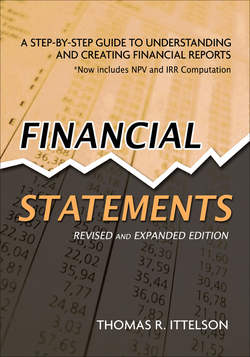Читать книгу Financial Statements - Ittelson Thomas - Страница 4
На сайте Литреса книга снята с продажи.
Preface
ОглавлениеIf the first edition of this book was an entrepreneurial business, it would be a huge success. Now over 100,000 copies of Financial Statements: A Step-by-Step Guide to Understanding and Creating Financial Reports are in-press and helping non-financial managers and students of accounting and finance cope with the “numbers of business.”
With this new revised second edition, we have expanded the book into five sections from the original three. Many readers of the first edition wanted to better understand capital investment decision-making, which is the focus of our two new sections.
Capital is often a company’s scarcest resource, and using capital wisely is essential for success. The chief determinant of what a company will become is the capital investments it makes today. So in this new edition, we will use the financial analysis techniques of net present value (NPV) and internal rate of return (IRR) as capital investment decision-making tools
Preface to the First Edition:
We needed to hire an accountant to keep the books at a venture-capital backed, high-technology startup of which I was a founder and CEO. I interviewed a young woman – just out of school – for the job and asked her why she wanted to become an accountant. Her answer was a surprise to all of us,
“Because accounting is so symmetrical, so logical, so beautiful and it always comes out right,” she said.
We hired her on the spot, thinking it would be fun to have almost-a-poet keeping our books. She worked out fine.
I hope you take away from this book a part of what my young accountant saw. Knowing a little accounting and financial reporting can be very, very satisfying. Yes, it does all come out right at the end, and there is real beauty and poetry in its structure.
But let’s discuss perhaps the real reason you’ve bought and are now reading this book. My bet is that it has to do with power. You want the power you see associated with knowing how numbers flow in business.
Be it poetry or power, this accounting and financial reporting stuff is not rocket science. You’ve learned all the math required to master accounting by the end of the fourth grade – mostly addition and subtraction with a bit of multiplication and division thrown in to keep it lively.
The specialized vocabulary, on the other hand, can be confusing. You will need to learn the accounting definitions of revenue, income, cost and expense. You’ll also need to understand the structure and appreciate the purpose of the three major numeric statements that describe a company’s financial condition.
Here’s a hint: Watch where the money flows; watch where goods and services flow. Documenting these movements of cash and product is all that financial statements do. It is no more complicated than that. Everything else is details.
But why is it all so boring, you ask? Well, it’s only boring if you do not understand it. Yes, the day-to-day repetitive accounting tasks are boring. However, how to finance and extract cash from the actions of the enterprise is not boring at all. It is the essence of business and the generation of wealth.
Not boring at all.
